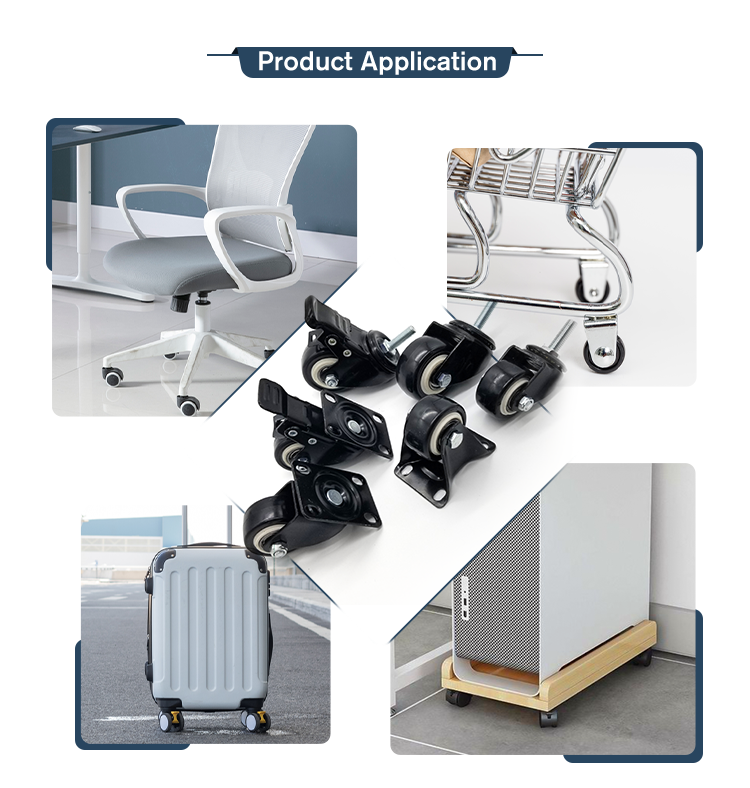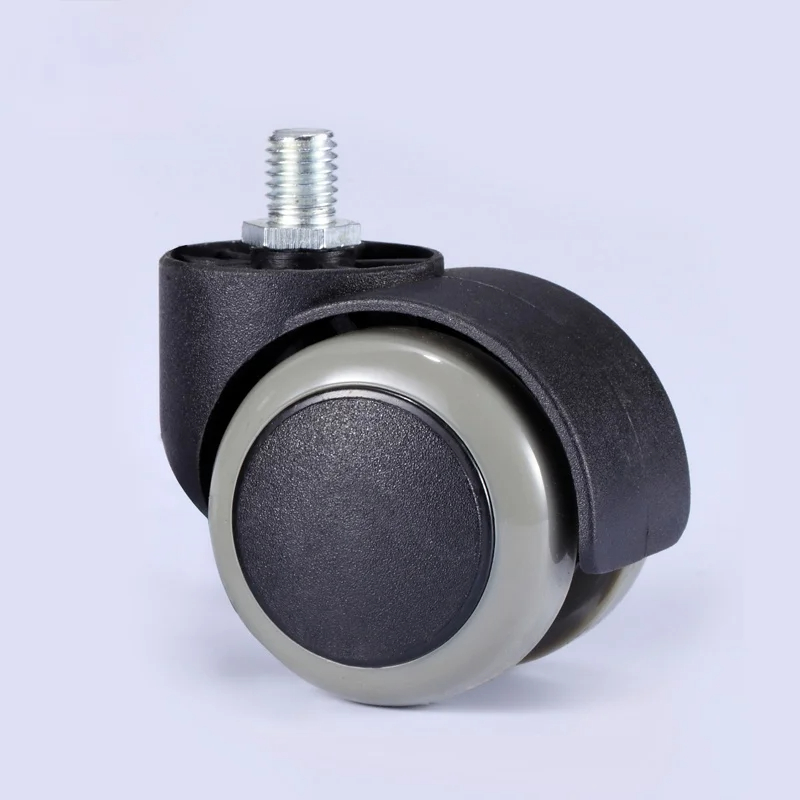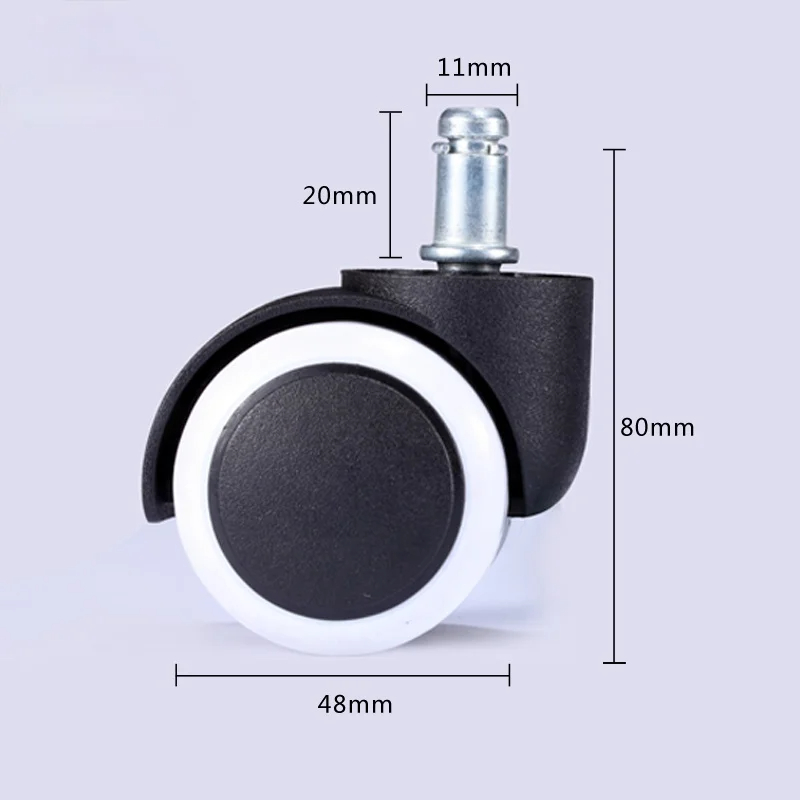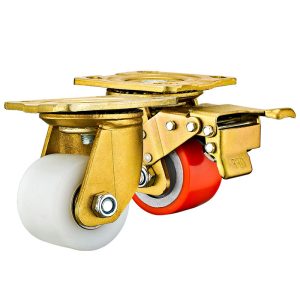Features of office chairs casters include:
- Mobility: Office chair casters are designed to provide smooth and effortless mobility, allowing users to move around their workspace with ease. This is especially important for tasks that require reaching different areas of a desk or office.
- Swivel Functionality: Most office chair casters are equipped with swivel functionality, allowing the chair to rotate in any direction. This feature enables users to pivot and change direction without having to lift the chair.
- Load Capacity: Casters are rated for specific weight capacities. Office chair casters are designed to support the weight of the user and the chair itself. Different models may have varying weight capacities to suit different users.
- Floor Compatibility: Office chair casters are available in different types, suitable for various floor surfaces. Common options include casters designed for carpet, hardwood, tile, or other flooring materials. Using the right caster for your floor type helps prevent damage and ensures smooth rolling.
These features are essential for providing a comfortable and functional seating experience in office environments, and selecting the right casters can contribute to the overall ergonomic quality and practicality of an office chair.
Office chairs casters offer several advantages, including:
- Flexibility: Swivel casters, in particular, offer flexibility by allowing the chair to rotate 360 degrees. This feature enables users to pivot and change direction without having to lift the chair, making it easy to reach different areas of their workspace.
- Customization: Office chair casters come in various types suitable for different floor surfaces, such as carpet, hardwood, tile, or concrete. Users can choose casters that match their specific floor type, ensuring smooth and effortless rolling.
- Floor Protection: Casters designed for different floor surfaces often include features to protect the floor. Soft or rubberized casters, for instance, prevent scratching, scuffing, or damage to the flooring.
- Weight Capacity: Office chair casters are designed to support the weight of the user and the chair. They are typically rated for specific weight capacities, ensuring the safety and stability of the user.
These advantages collectively contribute to a comfortable and efficient office environment, where users can work productively, maintain proper ergonomics, and enjoy the convenience of easy movement and access to various areas within the workspace.
Customizable aspects of office chairs casters include:
- Caster Material: Users can choose the material of the casters based on their flooring type and specific requirements. Common caster materials include rubber, nylon, plastic, metal, and soft materials. The choice of material can impact factors like floor protection, durability, and noise level.
- Caster Size: Caster wheels come in different sizes and diameters. Users can select the size that best suits their mobility needs and the chair’s overall design.
- Caster Type: Depending on the chair’s design and purpose, users can choose between different caster types, such as swivel casters for increased mobility or rigid casters for stability in one direction.
- Weight Capacity: Office chair casters are available in various weight capacities. Users should select casters that can support their body weight and any additional loads, such as equipment or accessories.
- Stem or Socket Mount: Casters can be attached to office chairs using a stem or socket. Users should ensure the mounting style is compatible with their chair’s base and their preferred installation method.
- Brake or Locking Mechanisms: Some office chair casters come with built-in brakes or locking mechanisms, which can be particularly useful in situations where users need to secure the chair in a fixed position.
Customizing office chair casters allows users to optimize the functionality, comfort, and aesthetics of their office chairs to meet their unique preferences and work requirements. These customizable aspects help create a personalized and ergonomic workspace that promotes productivity and comfort.
There are several packaging solutions available for office chairs casters, including:
- Plastic Bags: Many office chair casters are individually packaged in clear plastic bags. This simple and cost-effective packaging option helps prevent dust, dirt, and moisture from coming into contact with the casters while allowing for easy visual inspection.
- Blister Packs: Some office chair caster sets are packaged in blister packs or clamshell containers. These clear plastic packages display the casters and often include printed information about the product. Blister packs provide a degree of product visibility and tamper resistance.
- Cardboard Boxes: Office chair casters may be packed in small cardboard boxes, either individually or in sets. Cardboard boxes offer protection against minor impacts and keep casters organized. These boxes are often labeled with essential product information.
- Polyethylene Bags: Casters can be packaged in clear polyethylene bags, which are thicker and more durable than plastic bags. Polyethylene bags provide better protection against moisture and contamination.
- Bubble Wrap or Foam Inserts: Some packaging solutions include cushioning materials like bubble wrap or foam inserts. These provide additional protection against shocks and vibrations during transportation, reducing the risk of damage.
- Bulk Packaging: In commercial or industrial settings, office chair casters might be packaged in bulk, typically in larger boxes or containers. This minimizes packaging waste and simplifies the process of receiving and handling large quantities of casters.
The choice of packaging solution depends on various factors, including the type and quantity of casters, shipping methods, and branding preferences. The primary goal of packaging is to protect the casters from damage, keep them organized, and provide essential product information for consumers and distributors.

















